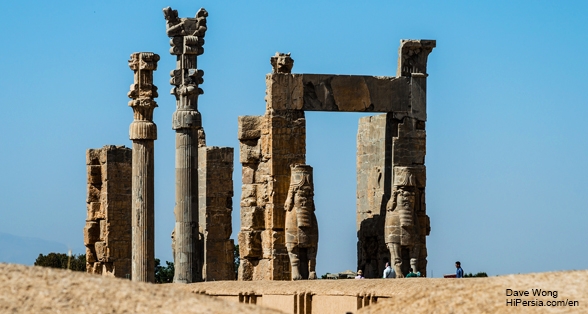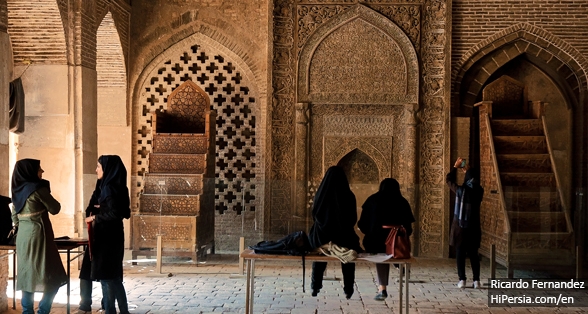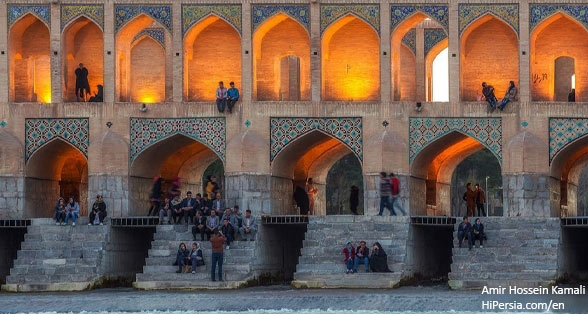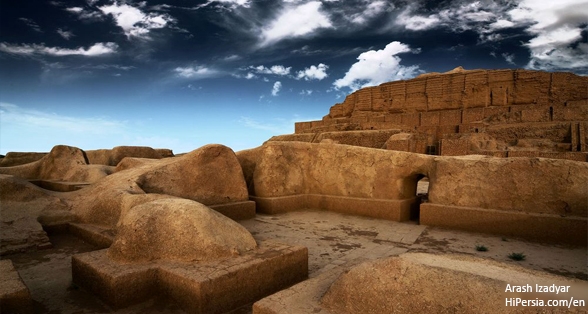




The UNESCO World Heritage Sites list includes sites, over the world, which have special cultural or natural characteristics and value for the human being. This list comes out from an international convention administered by UNESCO that started its program on 16 Nov 1972. This program is to provide legal protection for the sites in this list to preserve these heritages for the next generations and human beings.
Many tourists use the UNESCO World Heritage Site list as a base for their itinerary, so they are curious how many UNESCO World Heritage Sites are by country. The UNESCO World Heritage Sites list in Iran includes 27 natural, cultural, and historical sites. Now we briefly look at these 27 sites.
Tchogha Zanbil is a religious center whose construction dates back to the Elam civilization around 1250 BC. There is the largest and best preserved one of the few existing Ziggurats out of Mesopotamia in Tchogha Zanbil. Ziggurats were a holy stepped pyramidal structure by ancient Sumerians, Akkadians, Elamits, and Babylonians, and they believed that the god lives in the temple on the top of Ziggurats. The Ziggurat in Tchogha Zanbil was originally 105 m on each side and 53 m in height in five levels with a temple on the top of that. However, it is 25 m in height, approximately half of its original height. Tchogha Zanbil was destroyed by the Assyrian's attack in 640 BCE. But its remains provide rich knowledge regarding Elamit's culture, beliefs, and traditions, besides architectural development of the middle Elamite period (1400-1100 BCE). This archaeological site is located in Khuzestan province, 30 Km southeast of Susa, one of the oldest residences in the world.

Persepolis was the ceremonial capital of the Achaemenid Empire ( 550 - 330 BC). This complex was taken by the attack of Alexander the Great and wooden parts of it were destroyed by fire. Persepolis includes 125,000 meter squares the earliest part of which dates back to 515 BC. Nowadays, it is located at 60 Km northeast of Shiraz, the capital of Fars province. Persepolis is among the world’s greatest archaeological sites, and it was registered as an archaeological site that does not have any equivalent. Persepolis consists of throne rooms (Apadana), reception rooms, annex buildings, and majestic approaches.

The Naqsh-e Jahan Square is located in Isfahan province which was the capital of Iran in the Safavi dynasty (1500 CE - 1736 CE). It is surrounded by 4 spectacular monuments, the Sheikh Lotfallah Mosque in the east, the Shah Mosque (celebrated Royal Mosque) in the south, the pavilion of Ali Qapu in the west, and the Portico of Qayssariyeh in the north. Naqsh-e Jahan is one of the largest city squares in the world. it is 560 m long by 160 m wide, 90,000 square meters which used to be utilized for celebrations, playing polo, and assembling troops. This square is also bordered by two-story arcades accommodating hundreds of shops. Royal Mosque is a classical illustration of the colorful architecture that reached its most sophisticated level in the Safavi dynasty. The Sheikh Lotfallah Mosque is considered a masterpiece of Safavi architecture and the balcony over the Portico of Qayssariyeh used to accommodate musicians to perform public concerts. In spite of common urban design in the history of Iran, Naqsh-e Jahan Square used open space.

Takht-e Solyman is located on a plain in the west Azarbaijan province. it could be considered a set of ancient Zoroastrian sites with impressive architecture, belonging to the Sasanian period. It has also symbolic characteristics related to fire and water. On the main part of the site, there is a fortified oval platform which is 350 m by 550 m, and it is 60 m above the plain. On this platform, you could see an artesian lake, a Zoroastrian fire temple, a temple dedicated to Anahita (the divinity of the waters), and a Sasanian royal sanctuary. Takht-e Soleyman is a prominent site in Zoroastrianism.

Original Bam dates back to the Achaemenid period (550 - 330 BC), although its heyday was from the 7th century to the 11th century. in addition to historical importance, Bam had a unique geographical characteristic. This city has a long history of civilization while it is located in an oasis where there is not easy access to water. the reason behind it goes back to Qanats, which is a sophisticated way of underground irrigation. The earliest evidence of Qanats has been discovered in Bam, Iran.

Pasargadae is the first capital of the Achaemenid Empire, created by Cyrus the Great in the 6th BC in, today, Fars province. This archeological site has 160,000 square meters and consists of several parts such as the tomb of Cyrus the Great, Four Garden, Tall-e-Takht fortification. Pasargadae is considered the oldest testimony of the Achaemenid empire, the first multicultural one in Western Asia. The name of the Achaemenid Empire, called "Hakhamaneshian" in Iran, is the one every Iranian knows and pride of. In the Achaemenid Empire's rules, the cultural diversity of people living within their territory was recognized and respected. This respect is notable in monuments existing in Pasargadae. In addition, Pasargadae's monuments show the earliest evidence of Persian art and architecture.

Soltaniyeh is an Islamic historical place located in Zanajn province, the northwest of Iran. it was the capital of the Ilkhan dynasty. This archeological site represents the history of Iran in the 13th and 14th AD when Iran's Islami art was gaining its own identity. The main structure of Soltaniey is the tomb of Oljaytu, the eighth Ilkhan ruler which is considered an architectural masterpiece inspiring other great man-made heritages such as the Cathedral of Santa Maria Del Fior and Taj Mahal. The 50-m-high dome covered with turquoise-blue tile plus rich interior decoration with shiny tiles and brickwork impress every observer. In addition, elaborate materials and themes applied in the Dome of Soltaniyeh were taken as a considerable development in Islamic Art.

Bisotun is an archeological site in Kermanshah province that includes monuments from different historical periods from the Median, Achaemenid, and Sasanian empires to Islamic dynasties such as Ilkhanid. The principal monument of this site is the sacred mountain of Bisotun on which life-sized bas-reliefs of a historical event were dacumented on the limestone. The event dates back to the re-establishment of the Achaemenid empire by Darius the Great. This bas-relief has 15-meter height and 25-meter width and is located 60 meters above the plain. The story of the event which is 1200 lines was inscribed around and below the bas-relief in three different ancient languages: Babylonian, Elamite, and old Persian. This inscription was completely decoded in the 19th century and this achievement revealed unknown aspects of ancient civilization. In this term, Bisotun Mountain is comparable to Rossata Stone in Egypt.

Armenian Monastic Ensembles of Iran consist of three monasteries of Armenian Christian faith which are located in West Azarbaijan and East Azarbaijan provinces. These ensembles represent Armenian architecture and decoration, and they are the last remains of Armenian culture in this region. In addition, they show cultural interchange between Armenians and other cultures such as Persian, Byzantine, and Orthodox. The names of the monasteries are St Thaddeus, St Stepanos, and Chapel of Dzordzor. St Thaddeus which is the oldest one dates back to the 7th AC. They are still the place of Pilgrimage for Armenians.
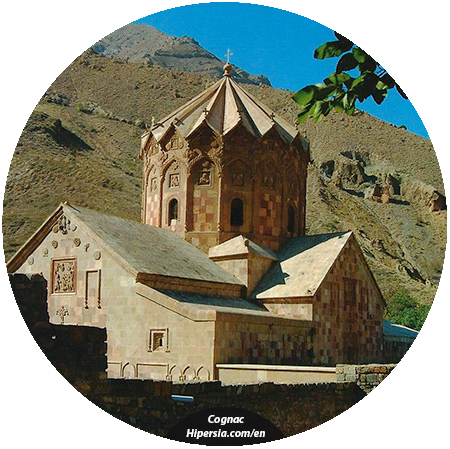
The Shushtar Historical Hydraulic System is a masterpiece in civil engineering located in Shushtar in Khozestan province in the southwest of Iran. The complete version of it dates back to the 3rd century AC, although it probably was based in the 5th century BC. The Shushtar Historical Hydraulic System is noteworthy in terms of both the knowledge applied to its construction and its functions. It is a testimony of human creative genius that benefited from diverse expertise from different ancient civilizations, such as Elam and Roman. Moreover, it has a wide range of functions including urban water supply, agricultural irrigation, fish farming, mills, transport, defense system, etc.

Thanks to its location on the Silk Road which was one of the most frequent East-West trade routes, The Tabriz Bazaar was one of the most important commercial centers between the 12th century to 18th century in the world. In addition to its function in commercial activities, it was also a center for social gatherings and educational and religious practices. The architecture of the Bazaar of Tabriz is notable. This has an interconnected structure each part of which belongs to a specific commercial activity. The Tabriz Bazaar is a classic example of a traditional commercial and cultural system of Iran.

Khanegah is a place where people following Sufism gather and perform their religious practices. Each Khanegah is under the control of a Sufi master who is their religious leader. Sufism is called Islamic mysticism and Sheikh Safi al-Din was a prominent Sufi leader living in the 13th century and founded the Safavi Dynasty ruling Iran from the 16th century to the 18th century. It is the largest and most complete Khanegah and the most important Sufi Shrine and is a place reflecting artistic works and architecture of the time between the 14th century to the 18th century. Sheikh Safi al-Din Khānegāh and Shrine Ensemble, located in Ardebil province, has a route to the shrine of Sheikh Safie Al-Din that has 7 segments and 8 gates, that are rooted in Sufism attitudes.

UNESCO collected 9 Persian Gardens in different parts of Iran so that they could show the diversity of all Persian gardens. Iran is famous for its four-season weather. It means that at the same time, you could experience 4 seasons in different parts of the geography of Iran. The designs of the Persian gardens adapted themselves to these diverse climates. Persian gardens emphasize four Zoroastrian elements: Water, Sky, Earth, and Plants, in addition, they try to visualize Pardis od Paradise. Moreover, applying geometry and symmetry in their architecture is noteworthy, besides sophisticated ways of irrigation and their water management are admirable. Persian Gardens are reflected in Iranian arts such as their poetry, calligraphy, and carpet design. They also inspire garden design in Western Asia, Arab countries, and Europe.
these 9 Persian Gardens that are mentioned under this item in the UNESCO World Heritage Sites list are:
the Pasargadae Garden in Fars province, the Eram Garden in Fars province, the Chehelsotun Garden in Isfahan province, the Fin Garden in Kashan, Isfahan province, the Shazdeh Mahan Garden in Kerman province, the Pahlevanpour Garden in Yazd province, the Dowlat Abad Garden in Yazd province, the Akbarieh Garden in South Khorasan province, the Abbas Abad Garden in Mazandaran province.
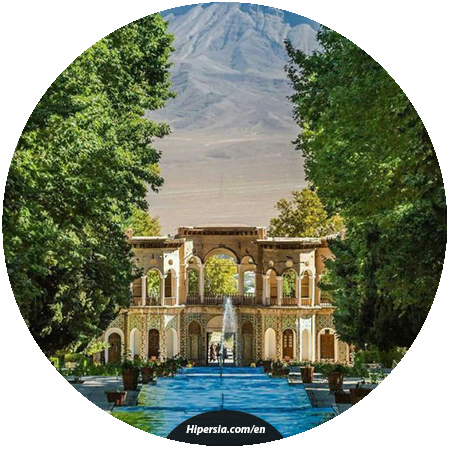
Masjed-e Jāmé Isfahan is also known as the Friday Mosque. It is a historical Islamic place in which you could see the evolution of mosques over the 10 centuries, since the 9th AD century. It accommodates diverse artistic and architectural works representing different historical periods in Iran such as Abbasid, Buyid, Seljuq, Ilkhanid, Timurid, and Safavi. In addition, It is the first Islamic building to apply a four-Iwan layout considered a Sassanid architectural technique. This site covers more than 20,000 square-meter and it is the largest mosque in Iran.

Gonbad-e Qābus is a tomb for Qābus Ibn Voshmgir, the second ruler of the Ziyarid dynasty, ruling from 935 AD to 967 AD. It is a 53 m high brick tower that features the application of mathematics and science in buildings of the Muslim world. It is the earliest tomb in the Islamic period, inspiring the construction of other tombs in Iran, Anatolia, and Central Asia. The ten-pointed star form of this monument and its conical roof illustrate the sophisticated geometric base of its architecture. This tower was built in 1006 AD and is located in Golestan province.

Golestan Palace was the seat of power during the Qajar period. Qajar dynasty, ruling Iran from 1789 to 1925, chose Tehran as their capital. The influence of Western art is considerable in the architecture and decoration of Golestan Palace. In addition, European building technologies such as cast iron for load-bearing, besides European artistic motifs and style applied in its structure. The 19th century was a significant period when Iran was influenced by modernization in the West, and modern Iranian artists synthesized ancient Persian values with modern European arts.

Shahr-i Sokhta, meaning Brunt City, is the remains of a mud brick city belonging to the pre-historic era, Bronze Age. It was founded in around 3200 BC and populated up to 1800 BC. Shahr-i Sokhta is a rich source of information regarding the emergence of the complex society and the transition period to the urbanized lifestyle. Shahr-i Sokhta is a spectacular example of early urban planning so that excavations have achieved clear evidence showing its structure, size, burial grounds, workshops, plus its trade and social structures. It includes four distinctive areas: monumental, residential, and industrial zones plus the graveyard. Shahr-i Sokhta was abandoned in around 1800 BC due to climate change. This site is located in Sistan and Baluchestan province.

Maymand is a village located in Kerman province, the southern part of central Iran's mountains. The main reason behind Mayman's register in the UNESCO World Heritage sites list is the cultural importance of the survival lifestyle its villagers have maintained since ancient times. Their lifestyle consists of three phases during a year when they settle in three types of housing, two of which are temporary. The other type of housing is a cave-dwelling that is in the cave carved out of soft rock, and its landscape is really stunning. Their cave-dwelling happens in the winter and from late winter and during hot seasons they live in temporary housing. Most of their temporary buildings are reconstructed every year, and it is a tradition among them which persists for their new generation.

Susa is located in Khuzestan province in the south-west of Iran. Susa is one of the most ancient archeological sites in the world. Its earth consists of 27 layers each of which belongs to a different period and urban settlement. Its remains cover a long history from 5 millennium BCE until the 13th century CE, and this characteristic makes it a perfect testimony illustrating the process of urbanization of the human being. Susa was the capital of Elamite. In addition, during its prosperous time, it was a commercial, administrative, and political hub due to its strategic position along an ancient trade route.

Qanat was a sophisticated method of irrigation by which Iranians were able to settle in this semi-arid region. The vital role of the Qanat in Iranian settlement and civilization made Iranian architecture and garden design form based on it. Qanats consist of a series of vertical shafts connected with a sloping tunnel through which water with the help of gravity flows underground and after passing a considerable distance, comes to the surface without pumping. This method maintains the water supply away from evaporation. In addition, the Qanat illustrates a cultural tradition of communal management of water resources by the human being. There are still living Qanat in Iran, nine of which represent this Item in the UNESCO World Heritage Sites list and benefit from its legal protection. They are:
Qasabeh Qanat, Baladeh Qanat, Zarach Qanat, Ardestan Moon Aqueduct Qanat, Qanat-e Hasanabad, azvan Qanat, Joupar Qanat, Ebrahim Abad Historical Aqueduct, Ghasem Abad Qanat

Lut Desert which is also called Dasht-e-Lut is recognized as one of the hottest spots in the world with a temperature of 70.7 degrees Celsius recorded in 2005. In addition, another significant characteristic of the Lut Desert is that it accommodates a wide range of desert landform types within a relatively small area. First of all is Kalute area which consists of stunning yardang landforms, some of which are 155 meters. The next landform is known as Hamada (stony desert pavements), the hamada was created by a natural phenomenon in which wind strips hard rocky outcrops bare of soil. Moreover, there are various types of sand dunes such as linear-, compound, crescentic-, star-, and funnel-shaped dunes. Another rare landform is Nabkha. the height of Nabkhas in Lut Desert reaches more than 12 meters, which is the highest one in the world. Moreover, there are other landforms resulting from other natural phenomena such as evaporation, salt crystallization, and soil erosion. lut Desert is occupied around 4 million ha and is located southeast part of Iran among three provinces, Sistan and Baluchestan, Khorasan Jonoobi, and Kerman.

Yazd is the capital of Yazd province in the central region of Iran. Yazd is a perfect example of the adaption of human beings to the arid environment through benefiting from their intelligent and clever techniques. Its buildings, all, are made of earth, the water of the city is supplied by Qanats. They also use wind catchers to exploit wind to make their homes colder in hot seasons. These qualities plus the unique architecture of their buildings form a pleasant atmosphere for several millennia in the heart of the arid region with limited resources including water. Yazd, in addition, illustrates the peaceful coexistence of different religions with each other for many years. Zoroastrians, Muslims, and Jews all live in Yazd, and there are their religious places (Zoroastrian temples, mosques, synagogues). Yazd with its Urban design and traditional districts, Qanats, bazaars, hammams, and water cisterns provides an exotic experience making any tourists impressed.

The item in the UNESCO World Heritage Sites list is the Sassanid Archaeological Landscape of Fars Region consists of 8 archaeological sites which are located in three geographical locations in the southeastern parts of Fars province: Firuzabad, Bishapur, and Sarvestan. These sites represent city plans and structures dating back to the Sassanid Empire (224 CE - 658 CE). Sassanid was the last Iranian Empire before the early Muslim conquests. Firuzabad, which is known as Ardeshir Khurreh, was the founder of the Sassanid Empire Ardeshir Papakan's military headquarter and the first capital of the Sassanid Empire. Bishapur was established by the second king of the Sassanid Empire, Shapur. The prominent monument in Bishapur is bas-reliefs reflecting the story of Shapur's wars and the defeats his army could inflict on Romans. In Sarvestan, there is the Sassanid Palace built in the 5th CE. These historical sites illustrate Sassanid architecture and urban design featuring a highly efficient system of land use and strategic utilization of natural topography.

Hawraman/Uramanat is a mountainous region in the heart of the Zagros mountain range. 12 villages were registered under this item in The UNESCO World Heritage Sites list in Iran. This area could be divided into two parts. the first one is the central and eastern valley (Zhaverud and Takht) which is located in Kurdistan province and the second one is the western valley (Lahun) which is located in Kermanshah province. This region is valuable due to its cultural and architectural features. People who live there are Hawrami, a Kurdish tribe, who have been able to adapt their lives to the harsh mountainous nature of this region and have lived for millennia there. terraced village, terraced agriculture, Hawrami people's traditions would be exotic and spectacular for a tourist. In addition, some stone tools, cave and rock shelters, inscriptions, and ancient paths have been discovered in this region that show the settlement of human beings or early human beings there dates back to 40,000 years ago and the Paleolithic era.
Trans-Iranian Railway scratches from the Bandar Shapur port ( now: Bandar Imam Khomeini) in the southwest to Bandar Shah (now: Bandar Turkman) in the northeast. It is noteworthy in terms of engineering work since it crosses 2 mountain ranges plus rivers, forests, and plains. You would experience 4 different climate areas during your trip on this way. In addition, it is considerable due to its role in the victory of the Allies in the Second World War. Through this railway, The British supported the force of The Soviet Union by supplying oil and other commodities.
Caravanserais were roadside inns providing shelter, food, and water for caravans, a group of people with animals or vehicles who traveled together for safety. There are a large number of caravanserais over Iran. But 43 caravanserais are considered the most valuable ones that are included in the UNESCO World Heritage Sites list. They are located in geographically different parts of Iran with their own styles and architectures, that belong to diverse historical eras.
Hyrcanian Forests are a one-kilometer forested belt that stretches from southwest to southeast of the Caspian Sea and has its own distinct fauna and flora. Its existence dates back to 25 to 50 million years ago. Its pleasing atmosphere and climate have made this region a popular tourist attraction among Iranians. Hyrcanian Forests include 3,200 plant species, 500 of which are Iranian endemics, 180 bird species such as including European Turtle Dove, Steppe Eagle, Eastern Imperial Eagle, Semicollared Flycatcher, European Roller, Caspian Tit, besides 58 mammal species such as Persian Leopard, and Wild Goat. This natural site is also notable in terms of rare tree species growing there. These features made it register in the UNESCO World Heritage Sites list.





.jpg)
